Please Support TheBeachcats.com


A-CLASS EXPLODER AD3 2019
Ad category.
EXPLODER 2019: It can be Flyer or Classic: Including: -Z24 and Z27 daggerboards -New set of rudders with the newest winglets -Sail brewing 2021. - Classic curve daggerboards. 2023. - Sail hammer (agost 2023).
-Trailer suitable for two boats and to keep the sails and tools and other staff. -beach cart - two uv sun protect coverts. - one lycra for travelling. - tools and some more staff
The A cat is in Murcia (Spain). contact details: email: [email protected] T: + 34 635393830


The British
'a' class catamaran, association.
The official site for the British 'A' Class Catamaran Association. Designed to inform new and existing 'A' Cat sailors about UK 'A' Class trends.

ISAF A CAT rules 2013
Top tips from the European #6 and GBR #1 Classic sailor Hugh Macgregor on how to sail and set up the classic boat and rig.
Hugh is a professional sailor and coach. He has been a multiple Champion across various classes.
I sail a Classic straight board 2009 Tool, with Hammer deck sweeper sail, Saarberg stiff untapered mast, Exploder boom, and Exploder asymmetrical winglet rudders, I am around 100Kg. The A Cat world is very diverse, my settings will not work exactly the same with your setup, but may help you generate a starting point. As I write this I am preparing for the Euros in Garda, and am trying to get my boat and myself as prepared as possible, in order to justify the expense of going. It’s a bucket list, once in a lifetime opportunity to tick off a Garda event.
I have worked hard to optimise my boat, the hull finish is perfect, the foils are damage free, and prepared to 3000 wet and dry, which makes them silent at speed. I have the rudder blades parallel, with no toe in. I have spent time adjusting the rudder rake and mast rake to make my boat want to sail in a straight line when powered up upwind, with no weather helm and light steering. My T foil rudders are set to half a degree of lift, more lift is good upwind, but pushes the bows down too much downwind. The T foils allow you to safely push much harder downwind, it’s a modification I would recommend. I bought a Saarberg stiff mast to suit my weight, and Micky Todd (Hammer sails) made a very nice sail to fit both my mast and my weight. I make extensive use of Micky’s tuning guide, and thank him for his coaching and advice, he showed me what an A Cat can really do. I have a Harken 40mm 9:1 mainsheet system with 8mm swiftcord, and 2 Harken 60mm auto ratchets to help manage the load. Good gloves are a must, the high aspect A Cat rig is all about mainsheet action.
A deck sweeper sail is a must have, it moves the power of the rig lower, where you can use it, making the boat faster and better mannered. A curved boom gives much better control of the foot than a boomless one. I currently sail with about 45mm deflection in my spreaders, and a diamond tension of 26 on the loos gauge, I don’t adjust these unless I change sails. My rake is to halfway between the aft beams and the transom, about six degrees, I find this is where my boat balances the best upwind. I go one shroud hole down (seven degrees) for days I should probably not sail, and one hole up (five degrees) for very very light days, but I mostly keep it in the neutral position. My shroud tension is 12 - 16, if I have more than 14 I cannot get enough mast rotation downwind in light winds, but more makes the boat feel more settled in upper wind bands. I tie my video tape streamers 1.5 meters up from my forestay fittings, and have them long enough to touch the mast upwind. It is worth getting a tuning guide from the sailmaker for the sail you use, to give you a starting point for settings.
Sail setup:
My main calibration when I prepare a sail I have not used before is the downhaul. Firstly, I pull on the downhaul until the sail is at its fullest, ie the most camber in the top half, then put a calibration mark on the mast. This is now my minimum setting, 0%, I pull it to this setting before the start, and never ease beyond this setting until after the finish, even in the lightest winds. I then pull on as much downhaul (and mainsheet) as I dare, until the top half of the sail becomes perfectly flat, then mark the mast/sail again. This gives me a range of 0% to 100% for the downhaul. The downhaul is the main power control you have, it is worth servicing and maintaining your downhaul system to make it as friction free and reliable as possible. If you cannot consistently get enough downhaul, because of lack of range or purchase, or old knackered blocks, you will be slow upwind. If you rip your sail with downhaul, it is a sign you need a better mainsail, not that you used too much downhaul. I have a 24:1 downhaul, as it allows me to adjust it more accurately, and make it easier to ease, with a more flexible mast 12:1 or 18:1 should be adequate.
The outhaul I always have as eased as possible, I try to have it set so 2/3rds of the sail is touching the curved boom when fully powered upwind. If the boat feels a little sticky, I ease it another inch. My calibration on outhaul is so I can always set it to the exact same amount, if it is an inch too tight, I find myself very slow upwind. I never adjust it to the wind strength, for me it’s set and forget. Power at the top of the mast can be useful, or it can just trip you over. Power at the bottom of the rig is always helpful, it is your main engine room.
The batten tension should be only just enough to stop sail creases developing across the batten when sailing. Mark your top batten when you’re happy with the tension, so you can always retie it in the same place, too much top batten tension or too little messes with your head.
Upwind modes:
Note: traveller always on the centreline. Video tape forestay streamer always touching the mast.
Upwind Light winds: before trapezing, approximately 1 - 5 knots wind.
Downhaul - 25%, but maybe up to 50% if very light winds making the rig sticky, or if you have a very full sail, and I usually pull on 50% downhaul for tacking to aid flicking the battens. Mast rotation - pointing to the daggerboard, I use my foot on the mast base to force it to rotate. Fore and aft trim - Sitting up at the main beam, or a little ahead, try and get the bow knuckle in the water. Mainsheet - it is very easy to stall an A cat rig with too much mainsheet tension in these conditions, I try to keep enough twist to avoid stalling, if in doubt let it out.
Upwind Transitioning: from sitting to trapezing, 5 - 8 knots of wind.
This is the hardest mode change to get right, as the apparent wind doubles in this range. Downhaul - 0% when sitting, but immediately up to 25% when you start trapezing. Mast rotation - start bringing it back to halfway between daggerboard case and back beam. Fore and aft trim - I move to behind the shrouds go out on the trapeze, if there is enough wind once on the wire I stay where I can just have the leeward bow knuckle at the water line, but if I am struggling to stay on the wire, I crouch in front of the shrouds, and really immerse the leeward bow, this helps with pointing. Mainsheet trim: In this mode, I try to have no twist in the rig whatsoever. You will find that there is a point when, as you pull in the mainsheet, firstly the twist reduces, then at a certain point, the camber in the upper rig starts to reduce. It is just before the camber starts to reduce that the rig is generating maximum power, ie minimum twist maximum camber, this is where you need it when you first get out on the trapeze.
Upwind: power band, 8 - 13 knots of wind.
This is when nothing that floats can touch an A Cat, it’s a magic carpet ride that makes all other boats look like traffic cones to go around. Downhaul - This is the range where my downhaul never stays the same for long, in 8 knots of wind it is at 25%, in 13 knots of wind it is at 100%. Mast rotation: by 13 knots, it will be pointing at the leeward rudder. I never bring it further in than the leeward rudder, it is worth having a strop on your mast rotation control system to prevent this. Fore and aft trim: aft of the shrouds, keep the bow knuckle just at the waterline, not in, not out. Mainsheet tension - tension the mainsheet for zero twist as a starting point. Most people when they transition into A Cats from other boats have a tendency to pinch into the wind too much in these conditions. If my video tape streamer wants to sit to windward of the mast under full mainsheet tension, I pull on more downhaul to flatten the top half of the rig, to bring the streamer back down to the mast. If my streamer is to leeward of the mast, I have too much twist in the sail, I pull on more mainsheet tension, and maybe ease a little downhaul, to bring it back up to the mast. Once the wind increases to the point where I am constantly easing the mainsheet (ie adding twist) to avoid pinching, I have the downhaul on at maximum 100%. Try to use more mainsheet action and less steering to get through the gusts and lulls, it’s faster. Remember, easing the mainsheet without pulling on downhaul, increases camber therefore power / drag at the top of the rig, where you least want it. If there is enough wind that you are introducing twist into the rig, you need to flatten the top half of the rig first. Downhaul is your primary tool to flatten the top half of the rig.
Upwind, 13 to 22 knots:
Here is where you guys with C boards and T foils can really take off, if you take a step back to get the first meter of boat out of the water, and keep easing the mainsheet to keep the streamer on the mast, you can get the boat into a skimming mode. If it all gets a bit too hectic, try dropping the traveller by a couple of inches, try lifting the daggerboards by 150mm, just to calm it down. If you find you cannot make the top half of the sail flat enough with downhaul in these conditions, you can try getting a stiffer set of top 4 sail battens, or old school would be to turn your top battens around, luff to leech, it all makes the boat a little less twitchy, at the expense of downwind power.
Downwind Modes:
Downwind, Mild thing, 1-5 knots of wind.
Downhaul - 0%. Mast rotation - off, force the mast to 90 degrees, with your foot or an over rotation control. Fore and aft trim - sit forward at main beam, to get the transoms out of the water. Traveller - maximum ease. Daggerboards - if straight boards, both up, if C board, windward one up. These are the most difficult conditions to get a A Cat downwind, it is very easy to stall the rig, and very hard to build speed. I aim to keep the apparent wind between 5 and 10 degrees forward of the beam. Keep the rudder use down to a minimum, keep the tiller extension planted on the deck to reduce movement. Mainsheet: Take the mainsheet directly from the clew for maximum sensitivity. Sheet in and reduce twist very gradually, as you build speed and bear away, but be prepared to head up and ease sheet again if you stall the rig. Twist is useful in these conditions, as it means at least some of the rig will be working at all times, if you have no twist, the rig is either stalled or working, not very helpful in light shifty winds.
Downwind, Transition, 5 - 10 knots.
Downhaul - 0%. Mast rotation off. Fore and aft trim: start moving aft, in these conditions, I am aiming to keep both hulls on their design waterline, bow knuckles and transoms just skimming. Traveller - from just inside of leeward hull to 400 mm inside of the leeward hull. Daggerboards - both up or windward one up. Mainsheet - Sheet for minimum twist maximum camber, I use the mainsail telltales to help me same as upwind use, but always being ready to ease an armful if it stalls. Once the breeze gets closer to 10 knots, the traveller starts to act like an accelerator, allowing you to go faster with very little increase in height.
Downwind, Wild thing, 10-16 knots.
My current rule of thumb, if there is enough wind to trapeze and fly a hull consistently upwind, then there is enough wind to fly a hull downwind.
Downhaul - 0%. Mast rotation - off. Fore and aft trim - just in front of rear beam to just behind rear beam. Traveller - leeward toe strap. Daggerboards - windward one up or both down. Mainsheet: Sheet for minimum twist, maximum camber and get the boat going fast before trying to lift a hull. Once up to speed, a quick little luff should unstick the windward hull before a big bear away and lots of playing the sheet to keep it flying. Prioritise accurate steering and sheeting over moving your weight around. In 10 knots of wind, I try to get my feet under the leeward toe strap before I pop a hull, in more wind, I try to get both feet under the windward strap and my arse wedged on the aft beam before lifting a hull, I like to be locked into the boat before it leans over too far. Bear away and ease sheet in the gusts, head up and sheet in for the lulls, and use mainsheet to smooth out the ride height. If the bow does start going under water, a sharp ease on the sheet will let it pop back up.
I am not agile enough to combine wild thing with trapezing, and I have straight boards so my boat does not generate lift with speed, there are a few modes I am probably missing out here, there are many more qualified sailors than me to explain them.
Downwind, 16 - 22 knots:
Downhaul - 25% - 50%, Mast rotation off, Fore and aft trim - as far aft as you can go. The convention is to point the boat deep downwind, with traveller up to inside of leeward hull. Ease sheet a bit and head up to build speed, and bear away and over sheet to calm it down, reversing the airflow over the mainsail leech to luff when required in the bigger gusts. I very rarely try to fly a hull in these conditions, as on my straight board boat I need all the buoyancy I can get. Another mode you can play with is to drop the traveller right down, ease the sheet, and keep the apparent wind on the beam, with the sail luffing slightly, and 50% downhaul. It has the advantage that you can always sheet in for more power and ease for less, it can help you make a leeward mark layline when you’ve misjudged your last gybe, and end up coming in a little hot. Whatever happens, the further back you can get your bum, the harder you can push it downwind without sticking the leeward bow in. If you do stick a bow in, you have a good chance of saving a capsize if you are properly wedged in to the aft beam and toe straps, if your bum slides forward, it’s swim time. Capsizing is slow.
Finally, maintenance - keep your boat in good condition. A minor breakage can often snowball on the water, a broken trapeze line or tiller extension joint can lead to much greater damage, a planned maintenance schedule can be useful, 2 years for a UJ, 2 years for trapeze strings, 3 years for shrouds, forestay, and their shackles, 5 years for downhaul equipment etc. Carefully check all your shackles, split rings, rudder fastenings etc after a big day.
Most damage to A Cats happens in the dinghy park, the mast can flap like a sail during a gale, and damage your boat, and push up the insurance premiums for all of us. To avoid damage, tie your mast spanner to the toe straps so the mast cannot rotate. Use your tiller extension to pass a line around your mast above the spreaders, and tie it down to the aft corner, this kills any resonance vibration that can damage the rig. Most importantly, tie your trapeze strings down tightly to hard points either side of your boat level with the main beam. Don’t leave your mast up in winter. Finally, tie down your neighboring boats, so they don’t blow onto your boat.
The best way to learn, and to optimise your boat and sailing style, is to come to A Cat events, it’s a friendly class, everyone will help you get up to speed as much as they can. A Cat’s are pretty bad handicap boats, but in class racing they offer some of the most intense and rewarding racing in the sailing world, accessible to all ages and for a wide weight range, there is not a better place to be on the water.
Tuning Your DNA
A set up guide can be found at http://www.racingcats.com/tuning_support/setting-up.php
Some figures for the set-up:
Toospore rudders 2-3 mm (measure rudders fore and aft at transom level)(always check after reception of the boat).
Rudder raked under the boat: no more than 15 mm (factory settings can be slightly more)
Toe-in daggerboards 3-5 mm (difference fore aft daggerboards) (= standard factory settings)
Daggerboard J or C board slider: 1 cm space to the back end (standard setting) for more lift move daggerboard more aft, for less lift move daggerboard forward. Just untighten the screws lightly and use the board as a lever to change the position of the slider
Mastrake: just behind the hatch in light winds, on the transom in medium winds, halfway the transom in stronger winds. (Procedure; keep trapezeline on the deck at the fore stay and see where it touches the hull aft). If you adjust mastrake you might have to adjust sheetlength too.
Polish daggerboards and rudders with grid 600 and then 1000 or 1200. Especially the finish of the daggerboard has a huge impact on the performance. New boards are not polished yet.
Upwind: traveller always in the middle, reduce mastrotation when the wind picks up.
Downwind: Traveller on hiking strap when doing the wild thing, mast rotation 80-90 degrees
Do not oversheet while doing the wildthing
Keep daggerboards down will doing the wildthing, pull the weather daggerboard up in marginal wildthing conditions. In the mild thing or while going flat pull both daggerboards halfway up.
In strong winds put the boards up 10 cm.
Position yourself between the side stay and the daggerboard case when you are going upwind. Only step back when the boat is on full speed. Hike before the sidestay in light conditions (see pics Stevie at the Worlds in Cesenatico). Many sailors stand to far back when going upwind especially just after a tack. (Keep fat bottom out of the water)
Use surf wax on the trampoline to enhance grip in tacks and gybes.
Use toestraps if you want to trapeze downwind. You do not need these in the lighter circumstances but if the wind picks up your will suffer from less fatigue.
If you can trapeze downwind some cunningham may result in higher endspeeds and more control.
If you cannot keep the bow up downwind come out of the trapeze, release the traveller a bit and steer for depth. Less mast rotation may improve control but hurts speed as well if wind is not stable.
Ask your sailmaker for the right amount of spreaderrake and the right amount of diamond tension. Use a loose gauge to measure the tension.
If you go from the windward mark to the offset mark do not step back and keep yourself positioned at the daggerboard case to prevent aggressive bow ups.
If you sail a long distance race reduce the amount of lift by moving the slider .6 cms forward.
Put your daggerboards in the trampoline bag before going ashore, else a board may wash off the boat and may sink.
Do not make jumps on purpose with the boat while reaching This might damage the boards.
Maintenance:
Keep your hulls clean. Wash the boat with water after sailing on saltwater. Transport it either in a box or use lycra covers.
Teflon wax sealer can be applied on both the hulls and daggerboards for less friction.
Put water on your daggerboards before you put these in daggerboard cases. Do not hang a daggerboard in the water if you are already sailing as it can be swept out of your hands.
Keep the screws on the pushrods of the rudders tight else the pushrod pin might rotate.
Check the knot in the daggerboard rope regularly as the daggerboards might sink if it comes loose.
Drill a 2 mm in the hatch covers to let air out in case of heating by the sun.
Do not drill holes in the beams as the beams are watertight and part of the positive safety buoyancy.
Do not use aceton on the paint to remove glue or stickers but use spiritus/alcohol instead.
Clean travellercar with clean water.
Check trapeze ropes regularly
Mast Setup - Landenberger
Over the past few seasons it has become quite clear that many people who have been experiencing speed or power problems have had little basic knowledge of what they can do with the mast settings. It is clear what do with the cunningham, simply pull on it to get the pressure out of the sail as you need, but often the mast is left unattended to, as a last priority. In fact it is one of the most important speed controls on the boat. It is important to understand how to use it, and what you want to have in the sail shape for different conditions. It is not so easy to just come up with numbers and angles that will suit every mast and sail so I will try to make some key points to help understand this correctly.
The more pre bend set in the mast the more effect mast rotation has on the sail shape.
The effect of the spreaders means that the more the mast is rotated backwards, the more the lower mast section can bend forward (in the direction of the boat) and the stiffer the top section becomes. Leaving the cunningham tension out of the discussion at the moment, the result would be that the sail becomes flatter in the bottom and fuller in the top.
Rotating the mast more forward allows the spreader to start to work and the lower mast section becomes stiffer in the forward direction and the top becomes softer backwards. The result is the sail will become deeper in the bottom and flatter in the top.
Cunningham pressure flattens the sail and will tend to flatten the top more than the bottom since the top of the mast is unsupported and more free to bend. Understanding the sail shape that works best in the differing conditions is then very important. For example in Flat water you would like to have a very even profile through the sail from top to bottom with good power in the top and the possibility to pull the mainsheet quite hard without stalling the back of the sail. On flat water you can sheet hard and point higher. By wave conditions you would want good power down low in the sail and have the top more open and twisted. This gives you power and the twisted top allows the boat to accelerate easily letting you steer around more and power the boat through the waves easier. Generally you can’t point as high as the boat on flat water but because of the waves you can achieve a much better VMG (velocity made good).
The typical example is that with increasing wind the sailor will pull the Cunningham hard but not adjust the mast rotation to go with it. The effect of the Cunningham is flattening the sail, but more in the top. This allows the leech to open. The boat may feel ok but often the leech is to open and you can’t point high enough. This setup can be good in big waves but on flat water the sailor would like to have the leech standing much straighter so they should rotate the mast further back. If you go back to our original points you can see that the mast becomes stiffer in the top and can bend more in the bottom. This is therefore powering up the top and flattening the bottom of the sail. With the Cunningham pressure you can sheet on hard and point high with good speed.
The other typical mistake which occurs, is that the sailor by strong wind, simply pulls the mast back in line with the boom and pulls full Cunningham pressure. Because the mast rotation is too far back the sail becomes too full in the top and too open in the bottom. The sail will have a lot of twist which some sailors think is good for strong wind, but because of the top of the mast reaching its maximum stiffness in the aft direction of the boat the sail will remain too full in the top. The end result is a sail which is twisted to far and with too much profile for the strong wind. The twist causes you to loose pointing ability and the depth is causing excessive drag, just slowing you down. You are in effect going slower and lower than the correctly trimmed boats.
Spreader rake is also another significant factor in setting up you rig. It also plays a part in how much the rotation angle affects the depth of the sail. That can be a whole subject of its own, so for now I make just a few comments. Try to think of pre-bend as controlling the position the mast takes its bend. The more pre-bend you make in the mast the lower the mast likes to bend. The lower the mast tries to bend the straighter the top section becomes. The flatter the pre-bend the more the top section tries to bend. The normal reaction of sailors is to increase the pre-bend for strong wind to flatten the sail and reduce it in light wind to increase power.
Principally that is correct, but it must be incorporated with the rotation to get the right balance in the sail. Like most things, too much or too little can be harmful. It is a great failure made by many sailors to flatten the spreader angle to far reducing the pre-bend in the mast to almost straight. For light wind this is doing more harm than good. The heavier sailors also often request more luff curve because they are looking for power.
With more luff curve and flatter spreaders light wind speed can quickly come to an end. The sail will become very full down low with a deep entry angle from the mast and a very closed leech section. When you get the first wind in the sail you may get a feeling of power, but you may also experience the boat just wanting to fly a hull but not wanting to go easily forward. The boat will not point and will not accelerate.
In many cases it is actually better to go the other way. By very light wind you can increase the pre-bend to open the lower part of the sail and reduce the entry angle of the sail behind the mast. With the rotation angle set correctly to get the head standing up just the right amount you can be very fast. Just remember flat is fast and deep is slow. It has a lot more to do with entry and exit angles of the sail to achieve height and power.
Amongst sail makers there are many different ideas, and history has proven that there are many ways to build fast sails. The most important thing is that the sailor can understand how the sail should work and manage it well. Also restrictions on materials and designs in the boats themselves change the way the sail has to work to achieve the best results. We design our A class sails to allow the mast to be rotated well back. The reason being, that the mast itself creates a lot of profile over the rig and therefore it is very important to be able to reduce the wind age over the mast by rotating back as the wind increases. At the same time the sail must flatten rather than get fuller. That is the secret to success.
Good sailing.
Here are a variety of articals about setting up and techniques. Not all will be aplicable to your particular boat, but information is power!

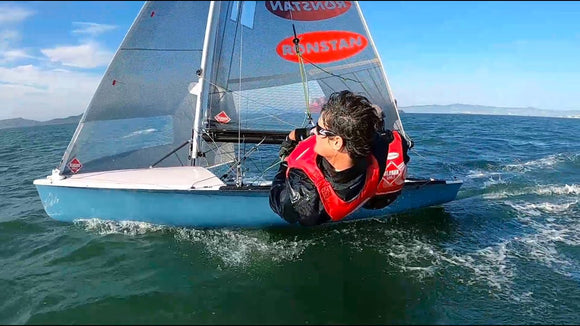
The best way to find out about new boats, new products, inventory, and sales.

In stock and ready to ship
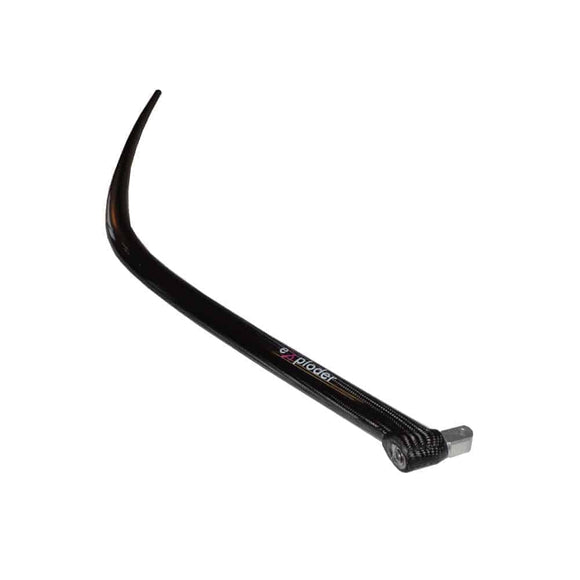
Curved Boom

T-ball Fitting for Hounds

Gooseneck – Side mast fitting Fiberfoam
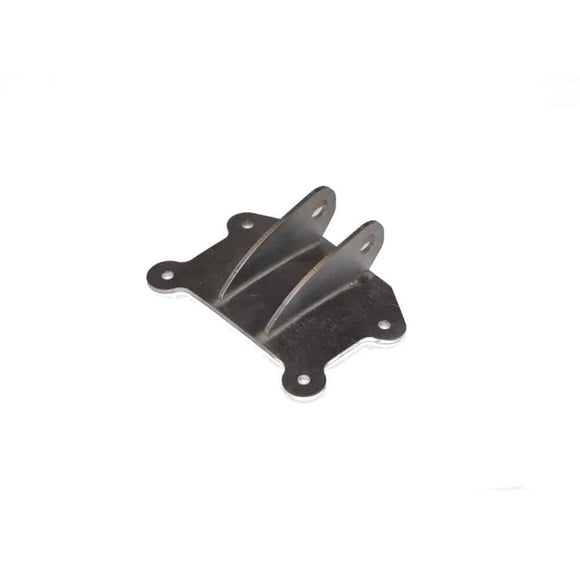
Gooseneck – Side mast fitting Exploder

The A Class Worlds are coming to the US!
Check out the site for more details: http://aworlds.com

Welcome to Fast Boat Stuff!
Your best source in North America for gear for A Class Catamarans.
We are your dealer for Exploder Catamarans and Fiberfoam masts and all the parts to keep them in top shape.
Looking forward to serving all your needs and seeing you at the next A Cat Regatta near you!
- choosing a selection results in a full page refresh

- WINDFOIL BOOM
- FORMULA KITE FOIL
- KITEFOIL RACEBOARD
- ONE PIECE CARBON BAR
View Cart Checkout
- No products in the cart.
Subtotal: € 0,00
- A-cat parts
Showing 1–16 of 59 results
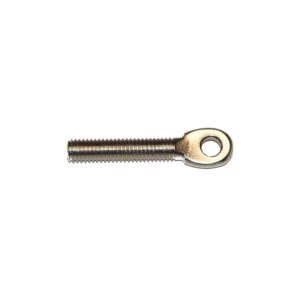
A-cat AD3 screw-eye for stays
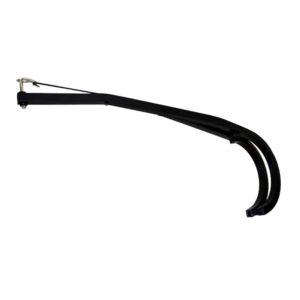
A-cat aluminium rudder’s stock

A-cat carbon radder’s stock (set: left and right side)

A-cat carbon round crossbar
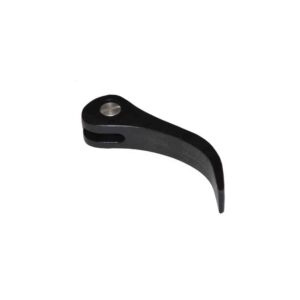
A-cat clamp for carbon radder’s stock (2 pcs.)

A-cat cover for trampoline
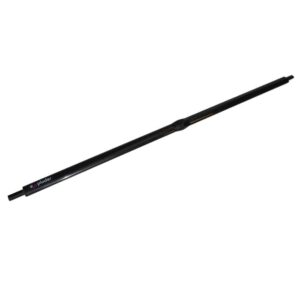

A-cat crossbar model 2019
A-cat crossbar model 2019 adjustable, a-cat crossbar model 2020 adjustable.
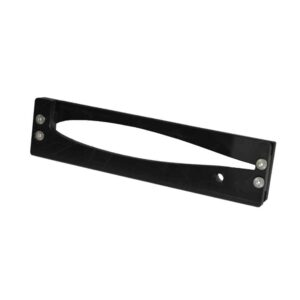
A-cat deck slider
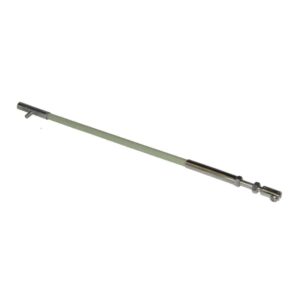
A-Cat rudder lock arm
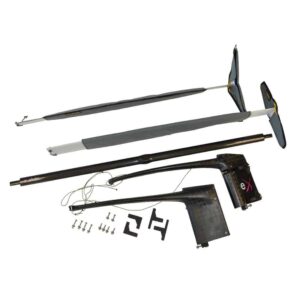
A-cat rudders set model 2019

A-cat set of adjustable hinges carbon lever system

A-cat set of hinges
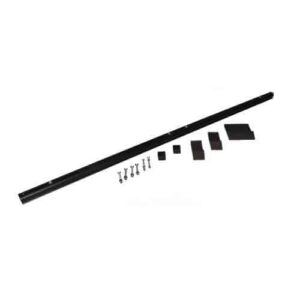
A-cat stright track
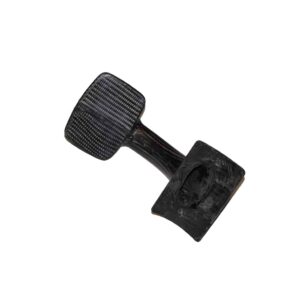
A-cat Tacktick holder

- New comments
- Military Photos
- Russian Military
- Anti-Aircraft
- SA-21/S-400 Triumf

92N6E Radar, S-400
- Oct 18, 2010
Media information
Share this media.
- This site uses cookies to help personalise content, tailor your experience and to keep you logged in if you register. By continuing to use this site, you are consenting to our use of cookies. Accept Learn more…
Electrostal History and Art Museum

Most Recent: Reviews ordered by most recent publish date in descending order.
Detailed Reviews: Reviews ordered by recency and descriptiveness of user-identified themes such as wait time, length of visit, general tips, and location information.
Electrostal History and Art Museum - All You Need to Know BEFORE You Go (2024)
- (0.19 mi) Elektrostal Hotel
- (1.21 mi) Yakor Hotel
- (1.27 mi) Mini Hotel Banifatsiy
- (1.18 mi) Elemash
- (1.36 mi) Hotel Djaz
- (0.07 mi) Prima Bolshogo
- (0.13 mi) Makecoffee
- (0.25 mi) Amsterdam Moments
- (0.25 mi) Pechka
- (0.26 mi) Mazhor

IMAGES
VIDEO
COMMENTS
eXploder AD3 is A-Class sailing catamaran - one of the fastest singlehanded sailing boats on the water. The eXploder A-Class cats have been in production since 2013 and in that time won a staggering 6 World Championship titles and 15 Continental titles. Since it's conception the eXploder platform has been improved over and over again.
Click images for slideshow and orig size. - Exploder D3 2020 A-Cat first impressions When the DNA F1 was launched we labeled it the coolest sailboat ever built. This new Exploder D3 A-Cat might not have the fancy aero of the DNA but is loaded with latest development from the joint effort of Jakub Kopyowicz / Exploder yard and Gonzalo Redondo from D3 Applied Technologies.
D3 Applied Techonologies / Exploder statement on the new AD3 2020 A-Class. "The AD3 2020 model is the result of over a decade of learning, testing, failing, succeeding at times, and overall, developing these boats. With the previous platform we made some compromises from a design perspective, enabling us to build test boats over the years ...
The final winner mainfoil for Exploder became the 'Z22' , Brewin won at Sopot with those. The rider in video above is an excellent monohull & F18 sailor, Hernan Salerno, he has about 1yr of A-Class sailing and latest mod to his A15 are the 388mm winglets from Exploder. Hernan reports a noticeable change from the 2018 Sopor winglets.
Got my new Exploder AD3, an A-class catamaran that flies on hydrofoils. The sail is from world champion Steve Brewin and the mast is from Austrian manufactur...
A Class - Full Foiling 2017 eXploder AD3 - negotiable - Catamaran Sailboat Classifieds. Choose Ad Type. Sell a Beachcat $15.00 USD Parts For Sale $6.00 USD Sails For Sale $6.00 USD Larger Multihulls $20.00 USD Monohulls $20.00 USD General For Sale $20.00 USD. Enter Username.
What's the newest A class catamaran have for the foiling set? A Class fanatic Bailey White gives us a tour as the 40-boat fleet assembles at the Helly Hansen...
Nathan Outteridge talks about the Exploder A13 foiling A-Class that he's racing during the 2014 A-Class Worlds in Takapuna, New Zealand.
EXPLODER 2019: It can be Flyer or Classic: Including:-Z24 and Z27 daggerboards-New set of rudders with the newest winglets-Sail brewing 2021. - Classic curve daggerboards. 2023. - Sail hammer (agost 2023).-Trailer suitable for two boats and to keep the sails and tools and other staff.-beach cart - two uv sun protect coverts. - one lycra for ...
The official organisation for the A-Class catamaran is the IACA (International A division Catamarans Association). The A-Class rules were expanded over time to prevent the cost of these boats from rising too high and to ensure fairness in racing. Max overall boat length : 5.49 m / 18.3 ft (= still the old IYRU rule) Max overall boat width : 2. ...
This is a good occasion to bring it a little wider audience, open the door from the kitchen and share some first impressions of the tests. Exploder A13 is a project of a new high performance A-class catamaran that was started in the summer of 2012. The precise moment of accession to the design and construction work is difficult to determine ...
'A' Class Catamaran Association . The official site for the British 'A' Class Catamaran Association. Designed to inform new and existing 'A' Cat sailors about UK 'A' Class trends. ... with Hammer deck sweeper sail, Saarberg stiff untapered mast, Exploder boom, and Exploder asymmetrical winglet rudders, I am around 100Kg. The A Cat world is very ...
Exploder AD3 2018. editor Thu, 03/14/2024 - 20:13. Image. Well upgraded and perfect condition AD3 complete Boat for sale ... For sale A class catamaran classic DNA 2012 whisper grey. Very good condition, Saarberg mast, Hammer sail, rudders equiped with winglets, 2 sets of daggerboards, palan Harken (*10).
The A Class Worlds are coming to the US! ... Fiberfoam Parts. Welcome to Fast Boat Stuff! Your best source in North America for gear for A Class Catamarans. We are your dealer for Exploder Catamarans and Fiberfoam masts and all the parts to keep them in top shape. Looking forward to serving all your needs and seeing you at the next A Cat ...
The eXploder store was created to enable customers to purchase parts, rigs and accessories for eXploder catamarans.
1. Electrostal History and Art Museum. 2. Statue of Lenin. 3. Park of Culture and Leisure. 4. Museum and Exhibition Center. 5.
A-Class: Sailing the Exploder. Liked this boat since day 1, and after seeing it at Bordeaux and finally sailing here in BA, it has confirmed my good vibes. I've Been sailing the Exploder A14 almost every day past weeks. At Bordeaux Europeans in June I sailed & raced the Scheurer G6. This Exploder has 80cm rudder blades, at Carnac the Arg guys ...
First S-400 bltn, Elektrostal, Moscow. This site uses cookies to help personalise content, tailor your experience and to keep you logged in if you register.
Pavilion 34 Kosmos: Global Class Museum of Space Exploration! - See 68 traveler reviews, 194 candid photos, and great deals for Moscow, Russia, at Tripadvisor.
A-Class: Learning to Foil the Exploder (Part III) Unusual cold rainy winter this year, so not much sailing. The F18s have been racing and training for the Worlds past months, but the 'Panzer tanks' can sail in almost any condition, with the F18 you can go out and charge +25knots and hard chop/waves. With the A for me the plan is always to ...
Tortuga Island Anhinga Trail Le Bois de Boulogne TRM - Thika Road Mall Hungarian State Opera House (Magyar Allami Operahaz) Museu de la Xocolata Trenitalia Frecciarossa Alligator Alley Old Arcade Small-group Milan Highlights e-Bike Tour SoHo, Little Italy, and Chinatown Walking Tour in New York Sri Lanka Tour, Kandy to Ella by Tuk-tuk and Train Nordnes Walking Tour: Bergen's History & Charming ...
A-Class: Exploder 2014. Looking good. Jakub Kopylowicz has been working hard for his As since the Mayfly days. He continued to put hours all these years and managed to provide finally another competitive alternative in the class with the Exploder A13 version. Following Dna steps towards flying he travelled to Takapuna Worlds with a new set of ...
I dedicated some hours adding clamcleats and a rope to lift the new Exploder J/Z foils. Wind started building offshore as expected with super flat river conditions, I geared up quickly and went out in around +15knots and building steadily. The FP guys ended sailing in 25knots that day, gp video of them tomorrow. I went out no cam. with the A.